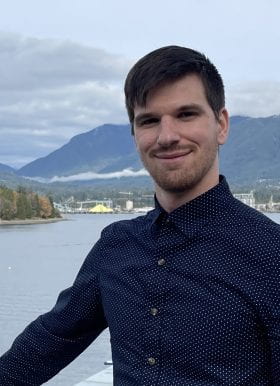
Luke O'Connor
My name is Luke O’Connor, I am a 5th year PhD student in the Developmental, Regenerative, and Stem Cell Biology program. Coming into my PhD I was interested in a career of translational medicine. But for me, the research justification that “discoveries from this proposal could inform future therapies” felt too abstract and removed from any patient living day-to-day with disease. I knew that I wanted to “inform future therapies” by actually developing them. I also knew that careers existed outside of academia. At WashU I have taken opportunities to improve the translational potential of my basic science research. I have met with patients and their clinicians about current needs or where treatments in their field are moving. As educational as these experiences were, I was still left with a big black box around the development of the therapy from its proof of concept because this often happens in industry. This is why I applied to Pivot314, to gain hands on experience with the first step inside that black box.
During this summer I had the opportunity to intern at M6P Therapeutics, a St. Louis area start-up which was established to improve therapies for Gaucher and Pompe diseases or lysosomal storage disorders. In these diseases, cells are unable to clear cellular waste. In many ways this is like if the garbage truck were to stop coming to your home. With no way to get rid of waste, the trash would accumulate on your street and in your home, creating a stressful and stinky situation. In patients with lysosomal storage disorder, cellular waste build-up leads to progressively worsening tissue dysfunction. Lysosomal function can be restored by replacing the enzyme patients lack through infusions. M6P therapeutics can effectively target their desired protein to the lysosome of most cells by using their patented S1S3 co-expression technology to add a Mannose 6-phosphate (A.K.A. M6P) tag.
As an intern, I worked on a project that aims to make cells in patients produce and secrete enzyme, like a little factory, to eliminate or reduce frequency of infusions. In designing plasmids for this project, I applied skills that I have learned during my PhD. While testing, and evaluating their usefulness, I learned new activity and binding assays.
Outside of my project I learned many key lessons about therapy development. For example, I learned how important partnerships with other organizations are for research completion in a small company. Working with collaborators or using a contract research organization enable M6P Therapeutics to conduct studies that would otherwise be too costly. Reliance on partnering organization also highlights the need for meticulous characterization and analysis of the product to ensure the product behaves reproducibly across many groups over time.
I have also been able to witness how you can reimagine your technology to give it a broader application. In a meeting with Dr. Lin Liu, Vice president of Molecular Biology and Gene therapies, he explained that S1S3 co-expression technology was designed for lysosomal enzyme replacement but it has the potential to target anything towards the lysosome. If it were to be combined with an antibody or other binding protein, their technology can be modified to remove excess protein from circulation. This reframing of their technology presents new therapeutic avenues into autoimmune or cancer therapies in an exciting way.
I could not have asked for a more welcoming environment or caring group as an intern. Working at M6P Therapeutics this summer has confirmed that I want to pursue a career developing therapies outside of academia. This experience has helped show me that much of what learning in my program can be transferred to this potential career. It has also helped me identify how I can better prepare myself for the job market during the remainder of my program.